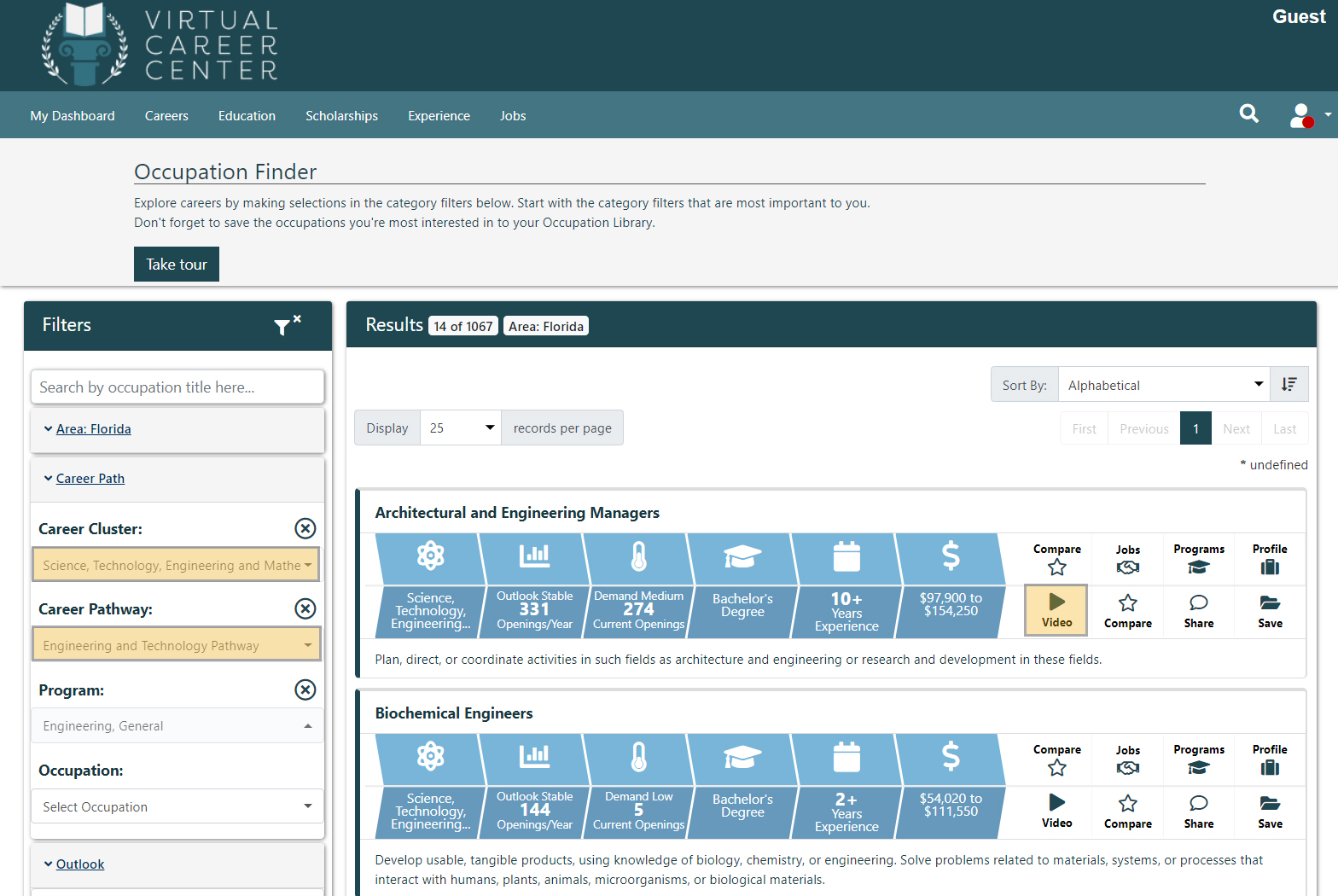Did you know that there are 16 career clusters and 79 career pathways that help students of all ages navigate their way to success in their college and career journeys?
Following the unified concepts of the National Career Clusters Framework, an organizing tool that began as part of an initiative to create a curricular framework and prepare students for educational transitions, each grouping contains occupations in the same field of work that require similar skills. Students, parents, and educators can use the clusters to focus on the knowledge, competencies, and training necessary for success in a particular pathway.

Source: air.org
Finding a comprehensive list of clusters and pathways online is as simple as visiting the Occupational Information Network’s website, which is perhaps better known by its acronym, O*NET. The online application provides the general public with broad access to the national database of occupational information.
But, text-based information can only go so far, especially with the next generation of learners more inclined to watch a video, or similar graphic interpretation. Visually seeing what a job’s day-to-day responsibilities entail is much more invigorating than simply reading about it.
Over the last few years, CareerOneStop.com, overhauled their entire library of career pathways videos. Sponsored by the U.S. Department of Labor, the site is a trusted source of employment information and inspiration, and offers tools for job seekers, students, businesses, and career professionals.
The Spark That Started It All
The movement around career clusters began in 1996 as the Building Linkages Initiative, a collaborative effort between the U.S. Department of Education, the Office of Vocational and Adult Education (OVAE), the National School-to-Work Office (NSTWO), and the National Skill Standards Board (NSSB).
The purpose of the initiative was to establish linkages among state educational agencies, secondary and post-secondary educational institutions, employers, industry groups, other stakeholders, and federal agencies. The goal was to create curricular frameworks in broad career clusters, designed to prepare students to transition successfully from high school to post-secondary education and employment within a career pathway.

Source: blogs.uis.edu
What’s in Store for the Future of Education?
Education’s future will continue to retain its BUILD Initiative and career cluster structure, while taking notes from digital transformation.
Based on the results from a recent survey conducted by Ellucian, the future of education will embrace new student values perhaps not considered in the traditional education model, such as personalized pathways, technology-driven advisor relationships, and a friction-free approach to career path selection.
Through 2020, technology will influence several industries, and the education industry is on the cusp of these changes. Although often considered cliché, advancing trends in technology such as voice assistance, predictive analytics, and chatbots will assist in further opening the door to equitable access.
Forbes.com recently wrote that new apps and software will ease learning barriers for students of all learning types. Most notably, video conferencing will play a significant role in accessibility, giving specialized support to even the most remote students.
Enter Virtual Career Center
Geographic Solutions is committed to playing an evolutionary role in education’s advancing future. Virtual Career Center (VCC), our web-based career services portal, is making strides in giving students a personalized career development experience.
CareerOneStop.com’s recent move to visually enhance career pathways has been reflected in VCC. Now, students who are using VCC to map out their school-to-work journey can view all occupational videos within the Occupation Finder.

Source: Virtual Career Center
Meant to give students the opportunity to discover professions that fit their needs, VCC’s Occupation Finder presents results filtering by career path, outlook and demand, wage, education and experience. The occupational profile provides valuable exploration information like top skills, tools and technology, and other competencies required to be successful on the job.
To lessen any doubt about a given profession’s monetary outlook, VCC offers regional labor market information to gauge occupational supply and demand. Students can further explore colleges, programs and current employment opportunities to begin planning their prosperity pathway.
With self-assessments and exploration tools that help learners make key educational decisions, relationship-first technology that drives one-to-one advisor communications, and employer-centric collaboration tools designed to assist in finding reliable, local talent, Virtual Career Center stands at the forefront of the next educational revolution.
Find out if Virtual Career Center is right for your region, state, school, or business by contacting Business Development Executive, Chuck Johnson.